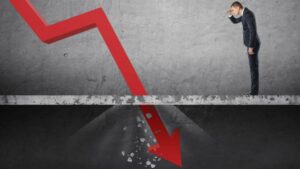Go away and come back another day.
- While I think that EV’s will take over the entire vehicle industry, the amount of capital chasing this sector has reached absurd levels and the signs of a sharp and devastatingly painful correction are everywhere.
- Electric vehicles make complete sense because once they begin to scale and the infrastructure is in place, RFM has calculated that the total cost of ownership for a consumer is around $5,000 per year less for the electric version of the same vehicle.
- Hence, at some point, there will be a large and multiyear product cycle where almost all petrol vehicles will be replaced.
- The problem is that the EV sector is trading like this has already happened.
- The hype and speculation around this sector has largely been driven by Tesla whose valuation defies gravity and has successfully populated the graveyard with those who have had the temerity to short the shares.
- On the fundamentals, Tesla’s valuation is assuming that it wins around 40% of the entire market for EVs which is something that is very unlikely to happen.
- This combined with the renewed governmental push to de-carbonise and low yields in the bond market has driven vast amounts of capital into this space seeking return.
- Tesla’s valuation has been used as a benchmark to massively overvalue a whole series of assets where there already signs of things becoming badly unstuck.
- This is especially the case in the SPAC space where a slew of EV-related companies are in the process of coming to market and where the valuations are already contracting sharply.
- NIO is 42% down from its peak, Lucid Motors (CCIV) is 66% down, Faraday Future is down 37%, BYD is down 35% and so on.
- However, despite these corrections, the valuations of these companies are still not unsustainable.
- For example, Lucid Motors is still trading at $31.2bn despite not selling a single vehicle in the next 12 months and needing to come back to the market for another $6bn before it can turn a profit.
- Deep Green which aims to source EV battery metals by recovering metallic nodules from the bottom of the Pacific Ocean is coming to market with an enterprise value of $2.4bn.
- This is essentially a high-risk mining opportunity that has not yet completed its feasibility study with the first revenues expected in 2024 at the earliest.
- This has the potential to provide a profitable and sustainable way to provide the metals needed for the EV replacement cycle, but the company will need to raise another $3.6bn before it generates cash.
- This is very common in mining opportunities such as this and the dilution impact of holding the shares now is unknown.
- Traditional miners in these sorts of situations trade at a fraction of this number.
- Another example of this Evergrande NEV which until recently was a health company (it is still classified as such by Bloomberg) but has now “become” a manufacturer of EVs.
- Since that time the shares have rallied from around HKD 6 in Q1 2020 to HKD65 today and it has raised money from both Tencent and DiDi giving a valuation of US$87.5bn.
- However, it has yet to sell a single real vehicle and in 2020 $578m (99%) of its $585m in revenues came from its health-related activities.
- $6.8m or around 1% of its revenues came from EV related activities but somehow the company is now worth $87.5bn despite the fact that the construction of its factory has apparently been on hold for a year.
- Most tellingly of all, there are now around 400 companies all trying to make an EV in China for a market that when it is mature will barely support 26.
- There is only one conclusion that a rational and reasonable person can come to which is that this sector is in a large bubble and there are strong signs that the bubble is already bursting.
- What will follow is a massive correction in valuations, substantial consolidation resulting in recapitalisations where current shareholders get virtually wiped out.
- The one saving grace for investors in the SPACs that have not yet completed their transactions is that they have the option to get out before the deal closes at $10 per share.
- It comes as little surprise to me that many of these SPACs are trading very close to $10 per share.
- Consequently, it is not until the transactions have closed and this copper bottom has been taken out that one will really see what the market really thinks about these companies.
- This sector has a bright long-term future but until valuations have reset substantially back to reality (as they always do in these situations), one should take one’s money and run for the hills.
- Come back and invest another day.









Apple – Feeling the squeez ...
08 May 2024